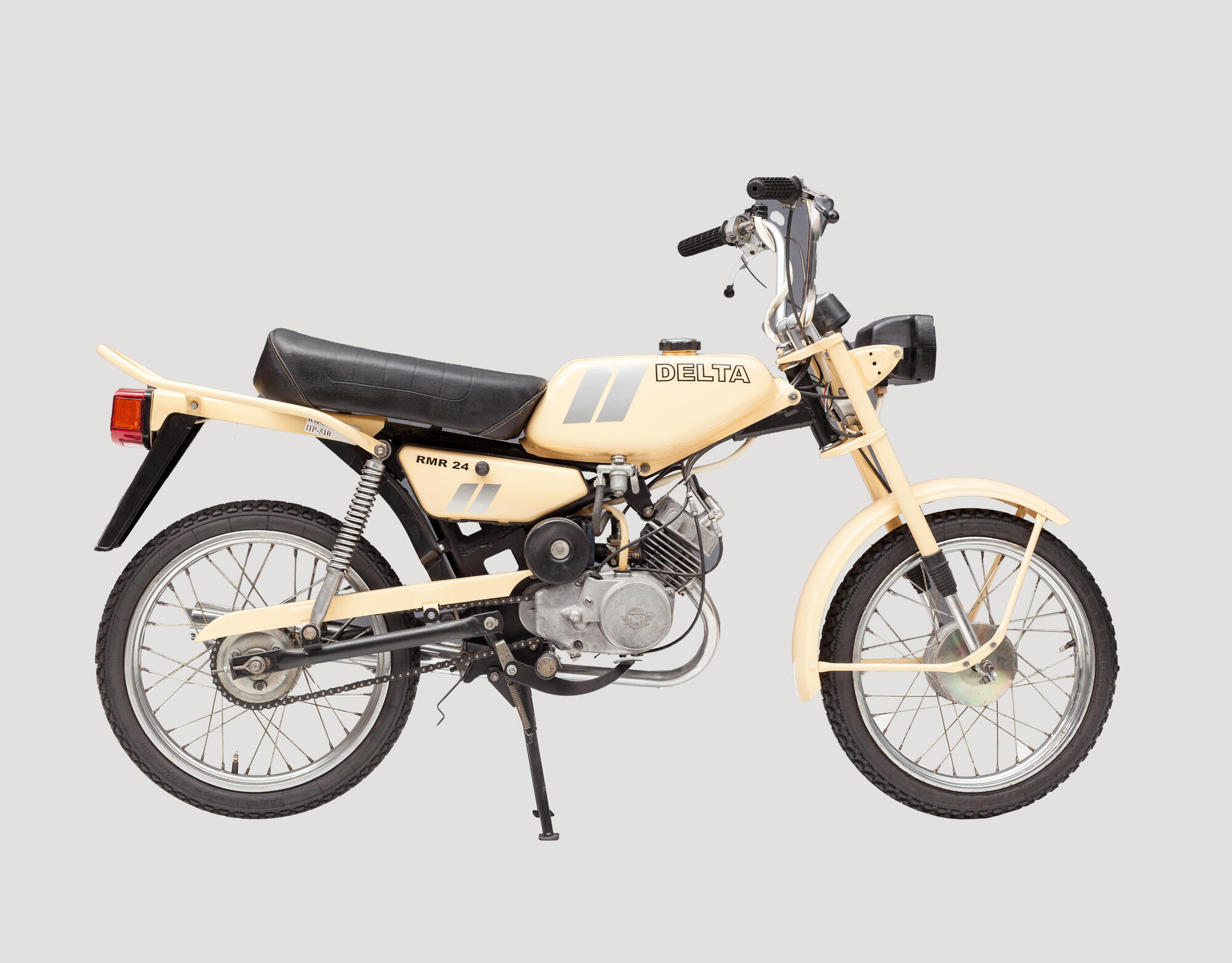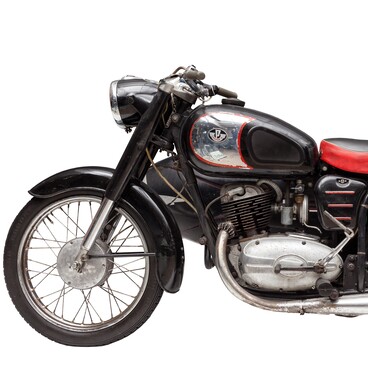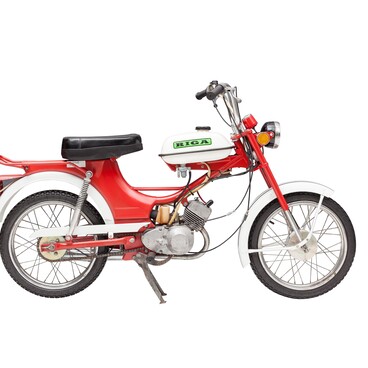In January 1986, the “Voice of Riga” magazine interviewed Viktor Siperkovsky, the chief designer of the Sarkanā Zvaigzne Factory. He spoke about the plant’s strategy for the next fifteen years, “According to the preliminary production plan for the period between 1985 and 2000, we intend to create a new layout pattern and develop a mini motorcycle with a displacement capacity of 50 cc and 80 cc, also known as a mokick.”
The same year, the factory presented an innovative vehicle — the Delta mokick (a moped with a kick starter). The factory released the first model of the new series in February 1986. It had various modifications — standard, tourist, sports, and deluxe — with only slight differences between them.
The deluxe and tourist versions differed from the standard one by having turning signal lights. Moreover, the tourist version was equipped with a windscreen and a luggage rack for carrying bags on both sides of the vehicle. The sports version had a more rigid handlebar with a crossbar in the middle.
For three years, until 1989, the mokicks were equipped with the V-50 and V-501 engines, the handle of the luggage rack was chrome-plated, and the headlight was black, round, and had a chrome-plated rim. The mopeds were available in red, brown, blue, and green colors.
Between 1990 and 1996, the luggage rack was painted the same color as the mokick itself, while the headlight became large, square, and plastic, and was later changed to a smaller one. The engines were also updated to the V-50M and V-501M versions. The brown and green colors were replaced by beige and white.
For an additional fee of five rubles, the buyer could purchase a rear-view mirror for any side or a luggage basket. The designers analyzed the riding positions of over 50 foreign motorcycles and made it possible to ride for a long time almost without any fatigue.
The owners could adjust the angle of the handlebar. The vehicle had an elongated seat and hydraulic shock absorbers in the rear suspension module. Moreover, it was equipped with a European light distribution system and the lamps could operate as both low and high lights. The moped had a fuel consumption of 2.2 liters per 100 kilometers.
The same year, the factory presented an innovative vehicle — the Delta mokick (a moped with a kick starter). The factory released the first model of the new series in February 1986. It had various modifications — standard, tourist, sports, and deluxe — with only slight differences between them.
The deluxe and tourist versions differed from the standard one by having turning signal lights. Moreover, the tourist version was equipped with a windscreen and a luggage rack for carrying bags on both sides of the vehicle. The sports version had a more rigid handlebar with a crossbar in the middle.
For three years, until 1989, the mokicks were equipped with the V-50 and V-501 engines, the handle of the luggage rack was chrome-plated, and the headlight was black, round, and had a chrome-plated rim. The mopeds were available in red, brown, blue, and green colors.
Between 1990 and 1996, the luggage rack was painted the same color as the mokick itself, while the headlight became large, square, and plastic, and was later changed to a smaller one. The engines were also updated to the V-50M and V-501M versions. The brown and green colors were replaced by beige and white.
For an additional fee of five rubles, the buyer could purchase a rear-view mirror for any side or a luggage basket. The designers analyzed the riding positions of over 50 foreign motorcycles and made it possible to ride for a long time almost without any fatigue.
The owners could adjust the angle of the handlebar. The vehicle had an elongated seat and hydraulic shock absorbers in the rear suspension module. Moreover, it was equipped with a European light distribution system and the lamps could operate as both low and high lights. The moped had a fuel consumption of 2.2 liters per 100 kilometers.




